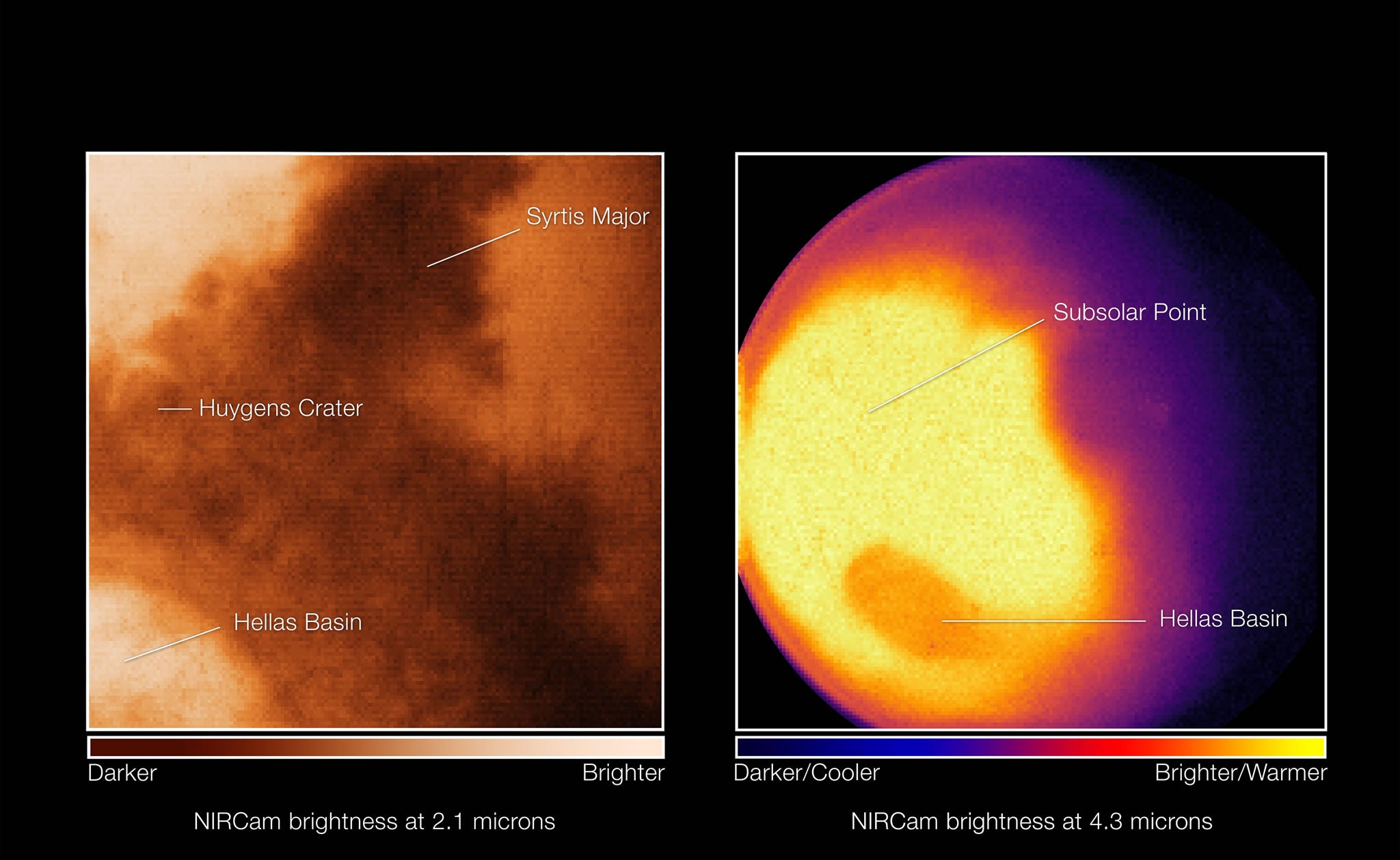Nasa’s Webb telescope takes aim at Mars for first time
The Webb Telescope has returned its first image from our own backyard, beginning its studies of the Red Planet
Your support helps us to tell the story
From reproductive rights to climate change to Big Tech, The Independent is on the ground when the story is developing. Whether it's investigating the financials of Elon Musk's pro-Trump PAC or producing our latest documentary, 'The A Word', which shines a light on the American women fighting for reproductive rights, we know how important it is to parse out the facts from the messaging.
At such a critical moment in US history, we need reporters on the ground. Your donation allows us to keep sending journalists to speak to both sides of the story.
The Independent is trusted by Americans across the entire political spectrum. And unlike many other quality news outlets, we choose not to lock Americans out of our reporting and analysis with paywalls. We believe quality journalism should be available to everyone, paid for by those who can afford it.
Your support makes all the difference.The James Webb Space Telescope isn’t just for peering at the most distant galaxies, resplendently hued nebulae, or scanning far-off exoplanets for signs of life. The big new space telescope can also turn its big mirror on targets closer to home. Targets like Mars.
On 5 September, Webb took its first observations of the Red Planet, and those images and spectra have now been shared with the public for the first time. Webb is a joint project between Nasa, the European Space Agency, and the Canadian Space Agency, and Nasa and ESA both announced the new Webb views of Mars on social media on Monday.
Webb used its near-infrared camera, or NIRcam, to take images of Huygens Crater, and the Hellas Basin, the latter being the largest impact crater on Mars.
The telescope also used its infrared spectrometer to take a spectrum of Mars, a measurement of which wavelengths of light are absorbed as they pass through the planet’s atmosphere. Since scientists know what molecules and elements absorb infrared light at which wavelength, this allows them to break down the chemical makeup of the Martian atmosphere, including carbon monoxide and dioxide, and water vapor.
“These first-look Mars images already show distinct surface features and effects from the Martian atmosphere, and the spectra clearly show some of the main species we expected,” Heidi Hammel, an interdisciplinary scientist involved with Webb since the early 2000s, told The Independent in an email. “With a more detailed look, we hope to be able to tease out less abundant “trace” species, and perhaps even get a handle on the Mars methane mystery (why some observers see it, and others don’t).”
The Mars observations are the fulfillment of a long-time scientific dream for Dr Hammel, who first envisioned this work 20 years ago.
“Mars was part of my original proposal to NASA to become an Interdisciplinary Scientist for what was then called the ‘Next Generation Space Telescope.’ I wrote that proposal in 2002, and was selected by NASA in 2003 to serve on the formal Science Working Group for the new telescope,” Dr Hammel said. “ It has been a long strange trip over the past 20 years, but it is incredibly gratifying to see my original vision fulfilled, including these observations of Mars!”
The observations were not as easy as simply pointing Webb at Mars however. Exquisitely sensitive to infrared light and designed to pick up the faintest of galaxies at the edge of the universe, Webb had to be adjusted to even attempt to study something as close and relatively bright as Mars.
“Dr. Geronimo Villanueva was the lead for the Mars observations,” Dr Hammel said. “He designed a program that relied on extremely short exposures, specialized observational modes, and careful selection of wavelengths where Mars is not quite as bright. Even so, some aspects of the detectors were overwhelmed by Mars’ brightness.”

The research team learned a lot from these first Webb observations of Mars, she added, and it will be in Webb’s continued study of the Red Planet where it will really shine. Its infrared sensors will allow scientists to monitor Mars even during dust storms and over long periods of time to better understand how the Martian atmosphere works as a whole.
And Mars isn’t the only local target for Webb, according to Dr Hammel, who has prepared a large Solar System research program for the time on the Webb telescope she is guaranteed as an interdisciplinary scientist.
“We still have some exciting data to come, including infrared observations of Jupiter’s Great Red Spot; studies of comets and asteroids; measurements of distant Kuiper Belt objects like Pluto, Eris, and Sedna, and so much more,” she said. “What I am personally most looking forward to are the images and spectra of the ice giant Uranus and Neptune. My desire for observations of these planets was the reason I wanted to be a part of the “next generation” telescope missions so many years ago.”

Join our commenting forum
Join thought-provoking conversations, follow other Independent readers and see their replies
Comments